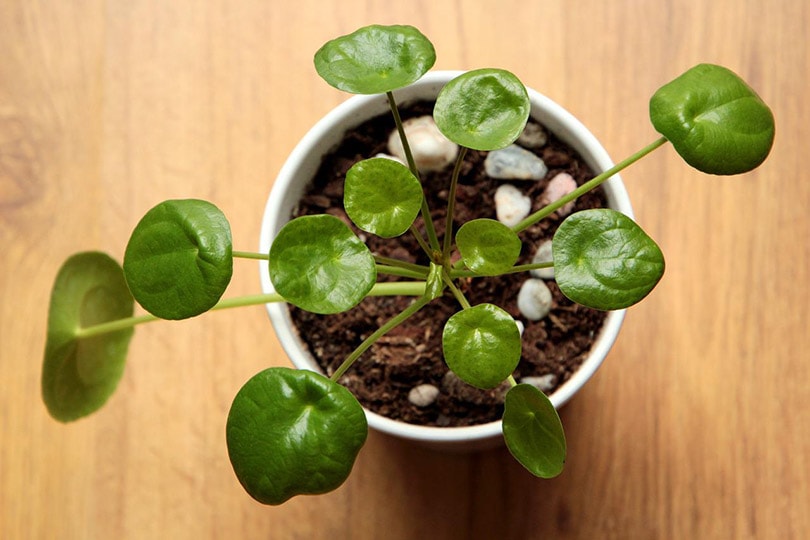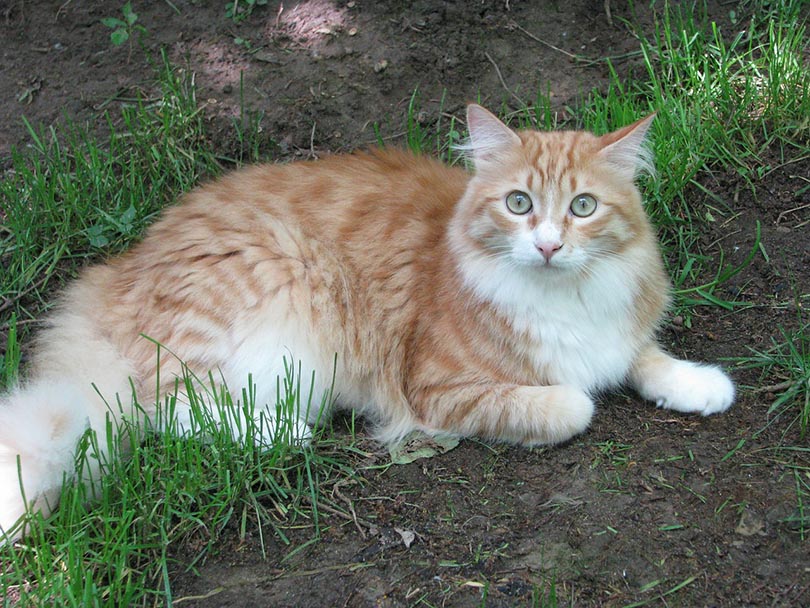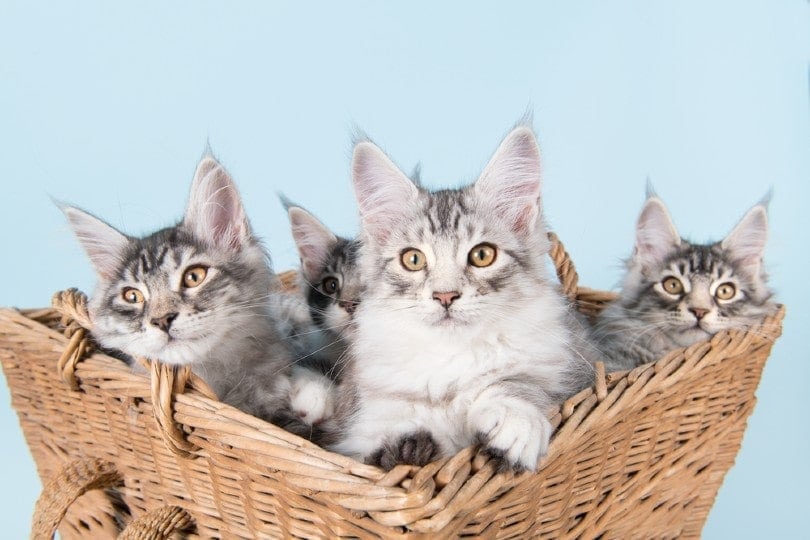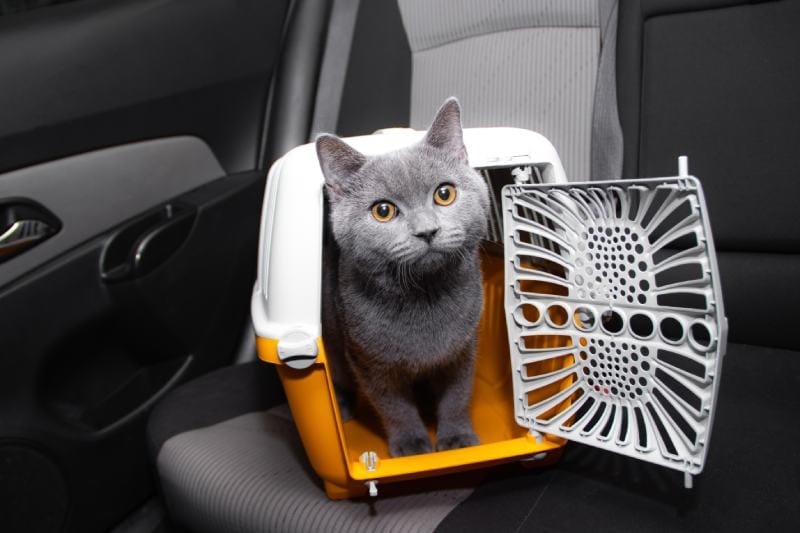Is Pilea Toxic to Cats? Keeping Your Cat Safe
Updated on

Click to Skip Ahead
Pilea is a genus of plants that are commonly used to decorate homes. They are easy to care for and grow. They are extremely easy to propagate, which is one reason why they are so inexpensive. They are also called Chinese money plants and are often considered good luck in Chinese culture.
They require only indirect light, so they are suitable in many different locations—you don’t have to put these plants by a window, in other words.
Luckily, these plants are also considered to be non-toxic to both cats and dogs.1 Therefore, even if your cat does munch on a leaf, they should be fine. There is nothing blatantly toxic about this plant.
Of course, you don’t want your feline eating mostly this plant. Instead, you want them to be eating their cat food as their main source of nutrition. These plants may not be toxic, but they do not provide much nutrition, either.
We also don’t recommend this plant as an alternative to cat grass or something of that sort. Pilea isn’t as nutritious or as well-loved by cats as cat grass. However, if you just want it to be a decorative plant, you don’t have to worry about your cat eating it since it is non-toxic.
Is Pilea Peperomia Safe for Cats?
Pilea Peperomia is completely safe for cats and dogs. In fact, it is one of the safest houseplants for cats. While it usually isn’t well-loved by cats or sought out, if they do eat it, they will be completely fine. For this reason, this plant is great for beginners with cats. It is undemanding and pretty easy to care for on top of being completely non-toxic.
You can find this plant at many nurseries and similar stores. They are becoming more popular, especially since they are so easy to care for.

Is Pilea Aquamarine Toxic to Cats?
Like all plants in the Pilea genus, this plant is considered safe for cats and dogs. It is not toxic in the least, so you don’t have to worry if your cat nibbles on a leaf. Furthermore, it is also non-toxic to humans. So, if you have children running around, you don’t have to worry about them, either.
This plant is perfect for anyone who is new to plants as it’s pretty easy to take care of. You can readily find it in most nurseries and similar places, and it isn’t terribly expensive.
Is Pilea Cadierei Toxic to Cats?
Like most Pilea, this plant is completely safe for your feline to eat. If you bring one into your home and your cat takes a few bites off of it, then you don’t have anything to worry about. They are also non-toxic to both dogs and children. Therefore, we find them to be a great option for most homes. They are easy to take care of, need only indirect light, and are non-toxic to just about everything.
Of course, you don’t want your cat munching all of your plants—for the sake of the plants. We highly recommend that you protect your plant even if they are non-toxic. You just don’t need to rush your cat to the vet if they munch on it.

Are Money Trees OK for Cats?
Money trees are just another name for Pilea, which are completely safe for cats. For this reason, you can easily put this plant into your home and not worry about your cat eating it. It also isn’t toxic to dogs and humans, so homes with pet dogs and small children won’t need to worry about it.
These plants are also extremely easy to care for and not very expensive. You can often find them at many nurseries and home improvement stores. If you’re looking for another plant for your cat-filled home, we highly recommend money trees.
Is Pilea a Peperomia?
No. This concept is a bit confusing. However, while the Pilea Peperomioides is a species of the Pilea, not all Pilea belong to this particular species. Luckily, though, you really don’t need to know the difference if you’re only worried about your feline. This whole genus is non-toxic to felines.
With that said, Peperomia is a completely different genus that is not necessarily completely safe for your feline. Therefore, just because a particular Pilea species sounds like this other genus doesn’t mean that it is this other genus. The names are just similar.
In fact, the actual plants are quite different. For instance, the Pilea is native to China and is the genus we have been discussing throughout this article. On the other hand, Peperomia is a much larger family and contains over 1000 species. It is mostly found in South America, as well.
They have very different characteristics. However, the Pilea Peperomioides is very similar to some Peperomia plants, hence its name.
With that said, the Pilea Peperomioides are somewhat rare on the houseplant market. They were only recently introduced as options for houseplants. Therefore, you may have a hard time finding them. But if you do, they are generally a great option for most cat homes.
However, don’t confuse this plant with the Peperomia genus, which does have some toxic species.

Is Pilea Nummulariifolia Toxic to Cats?
Like all Pilea plants, the Nummulariifolia is not toxic to cats in the least. It is completely safe for them to chomp on and eat, though this will damage the plant, of course. This plant is also safe for most other species, including dogs and humans.
Furthermore, this species tolerates partial sun and grows very well. It is one of the easier plants to grow, simply because it’s so prolific. We highly recommend this plant for those looking for a tropical feel.
Therefore, you should have no problem finding a safe place in your home for this plant.
Conclusion
Luckily, all Pilea plants are non-toxic to cats and most other species. They are also easy to take care of and come in a few different varieties. We recommend them for beginners that have small pets or children wandering around the house. These plants are both safe and beautiful.
Furthermore, they also tolerate complete shade and indirect sunlight, and are a solid choice for homes that don’t have many windows that get full sun. We particularly recommend them for homes that are looking for a tropical feel.
Featured Image Credit: a_low, Pixabay












